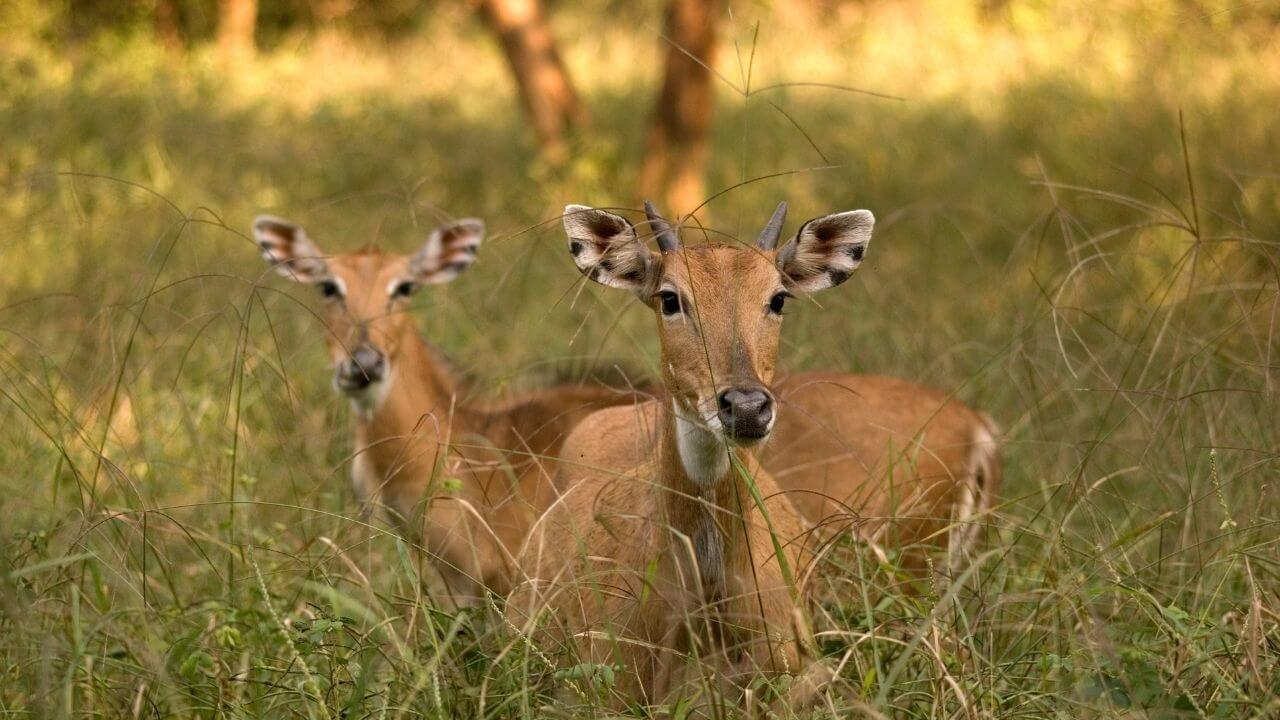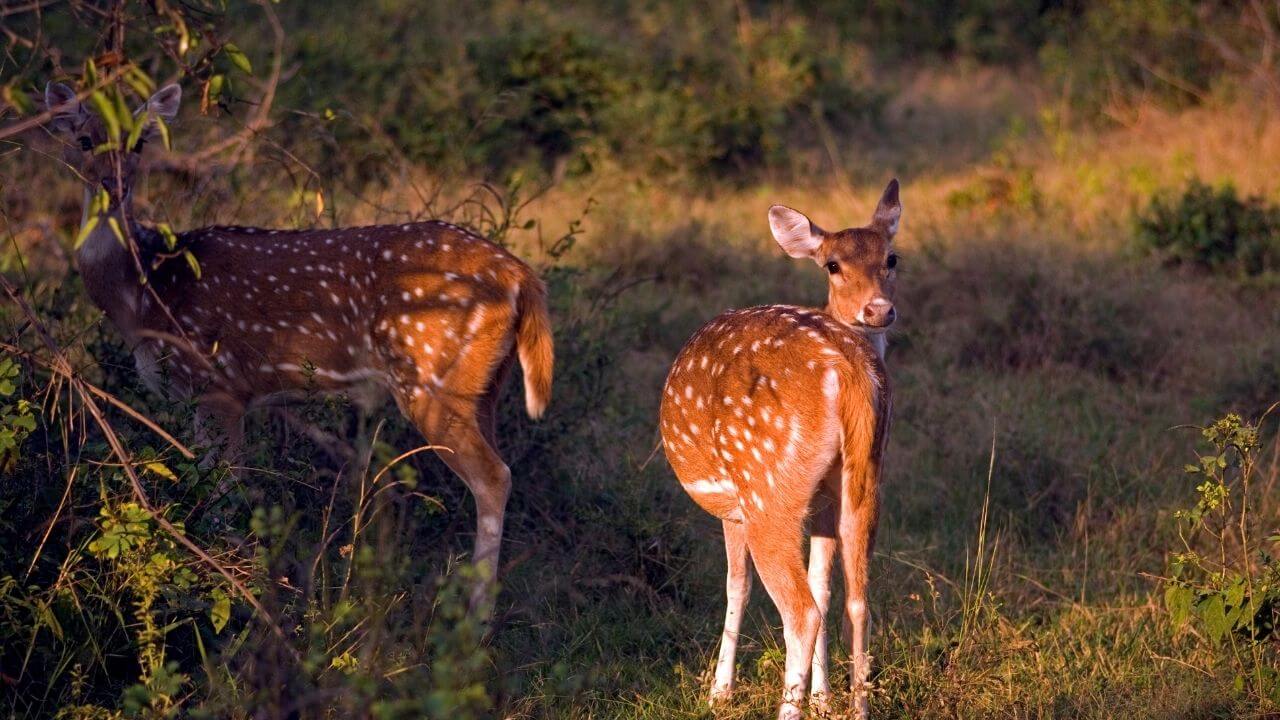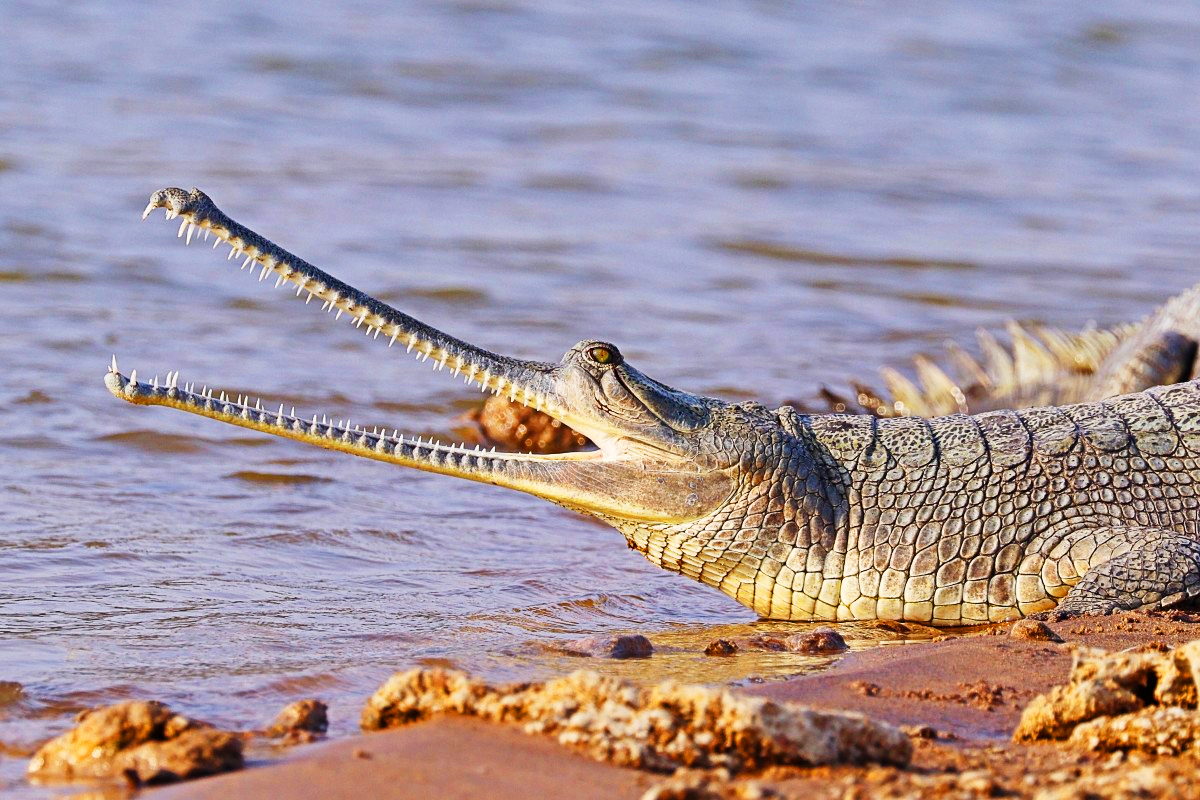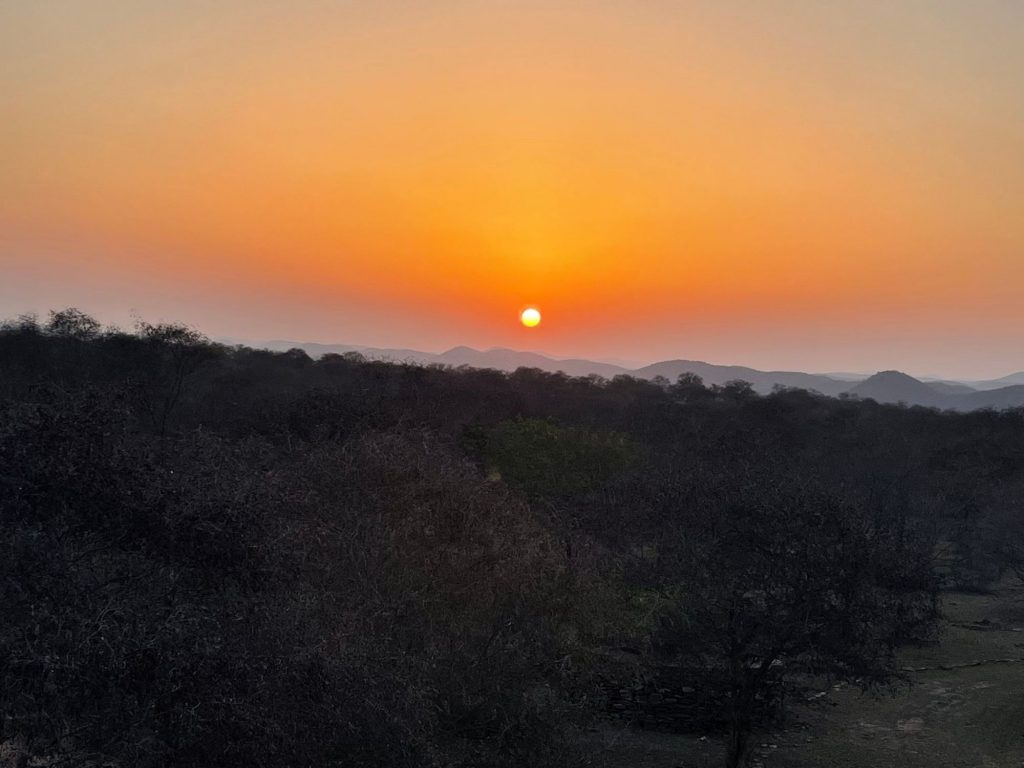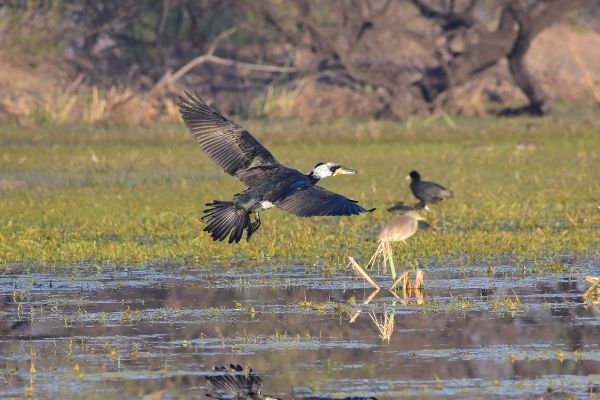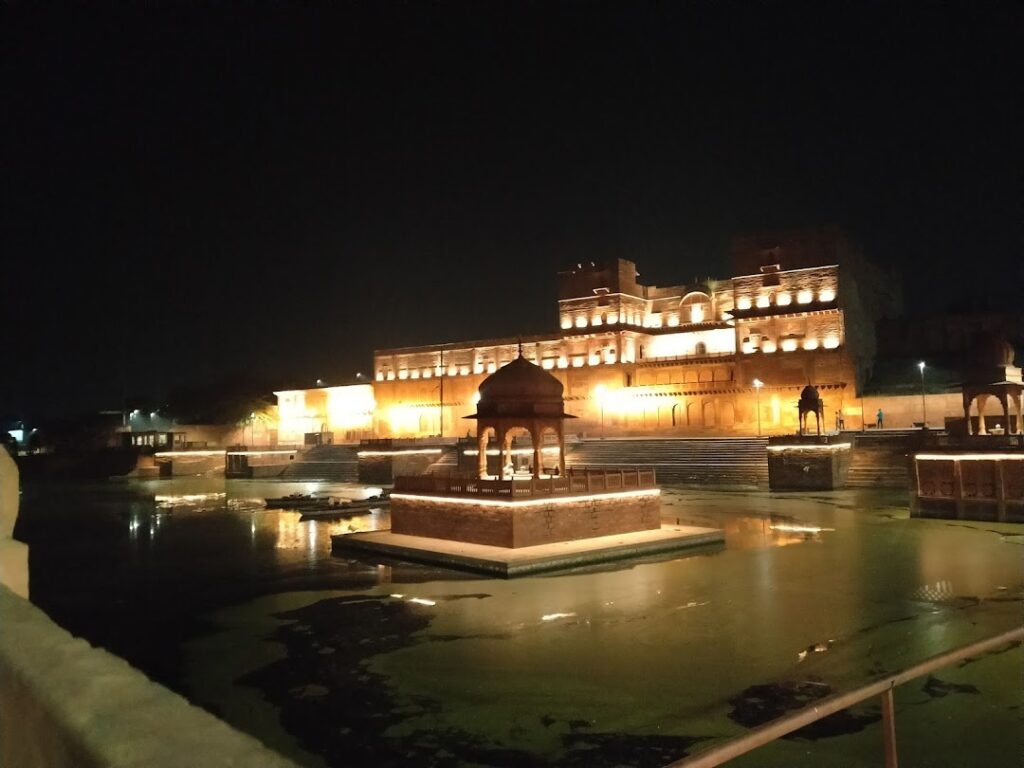Rajasthan, a state where history and modernity collide, welcomes visitors from all over the world with open arms. In this vibrant Indian state, there are palaces, gardens, museums, and forts, but the lakes are unrivalled in their allure. The lakes are made much more stunning by the ruins of great mansions that encircle the Aravalli Hills and the surrounding mounds of dazzling white salt. Visit some of Rajasthan’s most captivating lakes to add a splash of glitz to your next vacation to the state.
15 Beautiful Lakes In Rajasthan
1: Ana Sagar Lake
The Ana Sagar Lake in Ajmer is a beautiful man-made lake created by Arnoraj Chauhan, Prithvi Raj Chauhan’s grandfather. He was also known as Anaji, which is why the lake is named after him. Ana Sagar Lake is the largest lake in Ajmer, with the largest catchment area, a maximum depth of 4.4 metres, and a capacity of 4.75 million cubic metres of water. Ana Sagar Lake is one of Rajasthan’s most well-known lakes, and it offers a variety of leisure opportunities for visitors visiting Ajmer. In the middle of the lake, there is an island that may be reached by boat. Boats may be rented from the Dault Bagh’s east side. The greatest time to visit Ana Sagar Lake is between October and March when the weather is good and the lake is not as dry as it is during the summer.
The famed Daulat Bagh Gardens, created by Jehangir, is encircling the lake. In the centre of the lake, there is also an island. To get to the island, you can rent a boat or a water scooter from the east side of the Dault Bagh. Each year, the lake dries up. A circuit house, which used to be a British Residency, sits on a hill near the lake. Every year, a considerable number of tourists go to this stunning 12th-century lake.
2: Anand Sagar Lake
The Anand Sagar Lake is a manmade lake on the eastern outskirts of Banswara that was built by Lanchi Bai, the Rani of Maharval Jagami. It is surrounded by sacred trees known as ‘Kalpa Vriksha,’ which are said to grant visitors’ desires. The state’s rulers’ ‘chattris,’ or cenotaphs, are also dispersed around. Locals and tourists alike go to the lake, which is a popular tourist attraction in Banswara. Small mountains surround the lake, including the famed Ram Kund, also known as ‘Pati Khan’ due to a deep cave beneath a hill. Throughout the year, there is a pool of very cold water. Lord Ram is claimed to have visited and resided here while in exile. It’s a lovely spot surrounded by mountains.
3: Dailab Lake
Dailab Lake, near Bansawara, is a lovely lake that is always covered with lotus blossoms. It is a popular area for folks to unwind and enjoy some time in the great outdoors. On the lake’s edge, there lies a palace known as Badal Mahal. The palace served as the former monarchs’ summer retreat and is now a popular tourist attraction in Banswara.
4: Jaisamand Lake
Jaisamand Lake, also known as Dhebar Lake, is Asia’s second-largest manmade lake (after the Upper Lake in Bhopal). When full, the Jaisamand lake in Udaipur has an area of 50 square kilometres. It was established by Rana Jai Singh in the 17th century. Overlooking the Gomati River, he built a marble dam. The Jaisamand Wildlife Sanctuary, which covers 162 square kilometres of wooded area, surrounds the lake. Three islands in the Jaisamand Lake are inhabited by Bhil Mina tribes. “Baba ka Magra” is a combination of two large islands, one of which is named “Piari,” while the other is called “Baba ka Magra.” Known as the ‘Ocean of Victory’ (‘mand’ meaning ‘ocean’), Jaisamand Lake was one of the world’s biggest lakes until the construction of the Aswan High Dam.
On the day of its inauguration, June 2, 1691, Maharana Jai Singh of Udaipur built a massive 36.6-meter dam on the Gomati River and distributed gold equivalent to his weight. The summer palaces of the Queens of Udaipur surround Jaisamand Lake, also known as Dhebar Lake. On the lake, a bund is 366 metres long, 35 metres high, and 21 metres wide at the base. The Jaisamand Lake is located in the southern part of the Udaipur district. It is 50 kilometres from Udaipur. This district has a large number of state government and private bus services. Regular buses go directly from the district headquarters to Jaisamand.
5: Kaylana Lake
Kaylana Lake is a manmade lake located 8 kilometres west of Jodhpur city on the Jaisalmer route. It was built in 1872 on the site of two earlier palaces and gardens by Pratap Singh, the then-prime minister of Jodhpur. This lake is claimed to have been built by splintering historic palaces and gardens. The Lake, which covers an area of 84 square kilometres, is a beautiful picnic site as well as a useful utility. The Pratap Sagar garden surrounds Kaylana lake, which is home to a variety of bird species. The amazing sunset view from this location is the lake’s main attraction.
The sky appears to be a painting at this moment. The region around this lake used to be teeming with wild bears, and the royals used it as a hunting ground. However, with the rise in population, this is no longer the case. Another section of this lake is Takhat Sagar Lake, which is about 10 kilometres from Jodhpur city and named for King Takhat Singh, who governed Jodhpur in the nineteenth century.
6: Pushkar Lake
The Pushkar Lake, also known as ‘TirthaRaj,’ is a holy water body with a semi-circular form. The lake was formed by one of the petals that dropped from the lotus flower with which Lord Bramha slew the demon Vajra Nabh, according to Hindu legend. The Pushkar Lake is surrounded by almost 300 temples and includes 52 ghats, or sacred bathing areas, where pilgrims bathe. On Kartik Purnima, it is believed that if a person takes a holy dip in the lake, he or she would be saved. It is also believed that having a sacred bath in the lake will cleanse one of all sins and heal all skin problems. A week-long fair held before Kartik Purnima is well-known. Known as the ‘Pushkar Fair,’ it is an annual event that takes place in Pushkar, India. Pushkar Lake has a long history dating back to the fourth century BC. The construction of a dam across the Luni river in the 12th century began the building of Pushkar Lake is an artificial lake. Guru Govind Singh is supposed to have delivered the Guru Granth Sahib’s sacred address at the lake’s edge. The Rajput monarchs of Amber, Bundi, Bikaner, and Jaisalmer worked hard to restore the lake and its surrounding temples to their former glory. Many monarchs from various regions erected ghats across the lake after that.
7: Rajsamand Lake
‘Raja Samand Lake’ is another name for Rajsamand Lake. Maharana Raj Singh Ji constructed it around 1660. Located 66 kilometres north of Udaipur, between Rajnagar and Kankroli. Rajsamand Lake is a 510-square-kilometre body of water formed by the confluence of the Gomati, Kelwa, and Tali rivers. It’s 1.75 miles (2.82 kilometres) broad, 4 miles (6.4 kilometres) long, and 60 feet (18 metres) deep.
A massive dam built in the 17th century on the Rajsamand lake adds to its beauty and utility. Maharana Raj Singh Ji built ‘Nauchowki,’ which means nine pavilions, on the lake embankment. Pictures of the Sun, chariots, Gods, birds and other beautiful sculptures adorn the walls of this spectacular pavilion. There are 27 marble slabs etched with Mewar’s illustrious past. The longest etching in India, known as ‘Raj Prasasti,’ includes 1017 stanzas. The southern embankment is entirely composed of white marble, with stone stairs leading down to the water’s edge.
8: Chandlai lake Jaipur
Chandlai lake in Jaipur is one of the finest lakes in Jaipur. Take the Tonk Road straight for about 30 kilometres. You’ll arrive in Chandlai Lake, one of the most picturesque lakes near Jaipur. It’s a popular spot for bird watchers, so you’ll have plenty of space to think about your own business without someone looking over your shoulder or disturbing you. You won’t find a finer place to be if you’re a birder than Chandlai Lake. Between November and early March is the greatest time to visit.
9: Talab-e-Shahi
Talab-e-Shahi is one of Rajasthan’s cleanest and most productive lakes today. This lake, along with the nearby 17th century Khanpur Mahal, is located 27 kilometres from Dholpur and 5 kilometres from Bari in Rajasthan. It was built to assist Emperor Shah Jahan on his hunting trips to Dholpur. Even though Khanpur Mahal, a palace with multiple linked pavilions, was built as Shah Jahan’s pleasure abode, it was never able to fulfil its objective. In 1617 the palace and the lake were constructed. The lake’s beauty and tranquillity attract a variety of winter migratory birds such as pintails, tufted ducks, common teals, and garganey teals, among others. Following Shah Jahan’s death, the palace was handed over to the local royal family.
10: Mount Abu’s Nakki Lake
This lake is insanely beautiful. With a depth of roughly 11,000 metres and a diameter of a quarter mile, it is India’s first man-made lake.
On February 12, 1948, Mahatma Gandhi’s ashes were immersed in the Nakki Lake, which is said to be the site of numerous stories. Gandhi Ghat was built nearby. Because of the clear blue waters and lush surroundings, the attraction is also known as Mount Abu’s love lake. For the proud Garacia Tribe, it is also regarded to be a holy lake. Nakki Lake’s allure is enhanced by the adjacent natural beauties. On a neighbouring hill, the well-known Toad Rock, which resembles a toad poised to jump into the lake, may be found. A trail that leads to Sunset Point runs beside Nakki Lake.
11: Pichola lake Udaipur
The beautiful Pichola lake flows through the Udaipur city in Rajasthan. In the year 1362 AD this artificial lake was built in a village named Pichola. From then onwards this lake is said as Pichola lake.This amazing lake was developed centuries ago in Udaipur city.Maharana Udai Singh bought the lake’s attractiveness and built a dam on its banks. The landscape’s gorgeous green cliffs, with several palaces along their banks, are the icing on top. Udaipur, a lovely city, stretches along the eastern bank, with Mohan Mandir in the northeast corner. In the city centre, the Lake Palace is well-known, and on Jag Island, there is the Jag Mandir.
Palaces, marble reserves, family palaces, or Ghat or Shabatutra washing machines have all existed in the lake setting for hundreds of years. The Lake Palace Jag Nivas, Mohan Mandir, and Jag Mandir Palace are among the most well-known. Jag Nivas has been transformed into a historic inn on Jag Island. Between 1628 and 1652, Jagat Singh worked at Mohan Mandir, which is located near the northeastern part of the lake. There’s also Arsi Vilas, which was built by a Maharaja in Udaipur to assess the lake’s darkness. It’s also a refuge for various flying creature formations. The curves of the curve have been worked out to cross the interbank in a few spots where the lake border exists.
12: Fateh Sagar Lake
This Udaipur artificial lake was built in the city’s northwest. Fateh Singh, the renowned Maharana of Udaipur and Mewar, was honoured with this name.It was built in the year 1687. One must do a boating service in Aravali National Park if you’ve been there. By travelling down the Moti Magri Road, one can see the full perimeter of Fateh Sagar Lake and enjoy a beautiful perspective of the entire lake.The Fateh Sagar Lake is one square kilometre in size and is separated into three islands. The largest is Nehru Park, which has a boat-shaped café and a tiny children’s zoo. It’s also a well-known picnic location.A public park with water-jet fountains is located on the second island. Finally, the Udaipur Solar Observatory, Asia’s premier solar viewing location, is located on the third island.When there is a drought and rainfall is rare, the lake’s water storage capacity is insufficient to satisfy the demands. To inhibit evaporation, cetyl alcohol (hexadecanol) is sprayed over the lake’s surface.
13: Dudh Talai
Dudh Talai Lake is a small pond in the heart of Udaipur, adjacent to the famous Pichola Lake. This lake, surrounded by magnificent hillocks on all sides, offers adventurous sports such as camel and horseback riding. In addition, Manikya Lal Verma’s lovely garden, which dates back to 1995, adds to the attractiveness of Doodh Talai by providing a magnificent perspective of the peaceful Pichola and the Doodh Talai lake. The ancient temple of Karni Mata, set on a hillside, is home to Goddess Karni’s milky white statue and attracts worshippers from all over for the spiritual absolution it provides. Pt. Deen Dayal Upadhyay Park, with its enchanting appeal, graces the Manikya Lal Verma garden. Pichola Lake dates back to the 14th century and was originally constructed to provide water to the neighbouring areas. This man-made lake, famous for hosting the much-anticipated James Bond film Octopussy, is home to four islands and gives thrill-seeking travellers a thrilling boating experience.
14: Gadisar Lake
The Golden City of India, Jaisalmer, is located in the Thar Desert, around 30 kilometres from the Pakistan border. It is home to several ancient sites.The Gadisar Lake is one of Jaisalmer’s most spectacular man-made features. This lake, located in Rajasthan’s desert area, has the appearance of an oasis.
It’s a great place to visit if you’re interested in architecture, culture, or serenity. Visit this location in Jaisalmer for a relaxed experience while you have the opportunity to absorb in the breathtaking scenery. Gadisar Lake offers a variety of things to offer, whether you want to spend some peaceful time alone or have a good time with your family and friends. Starting with a tour to Gadisar Lake, you might choose to start there. Take a walk around the lake and look at the migrating birds that fly over it to appreciate its beauty. In addition, you may learn about Jaisalmer’s history at the Desert Culture Centre and Museum. The city welcomes you into the lovely Gadisar Lake with elaborately carved temples and Tilon ki Pol. Close to the fort and temples of Jaisalmer.
15: Man Sagar Lake
Man Sagar Lake is an artificial lake in Jaipur, Rajasthan’s capital. Raja Man Singh, the monarch of Amer at the time, built it in 1610 by damming the Dravyavati river. In the centre of the lake is the Jal Mahal. Around 365 days tourists from all over the world visit here for bird watching. More than 180 spices are already found in this place.For birds this is a beautiful habitat that they wish to live in.This The cool breeze from the mansagar lake can be enjoyed by sitting in the top of jal Mahal.






